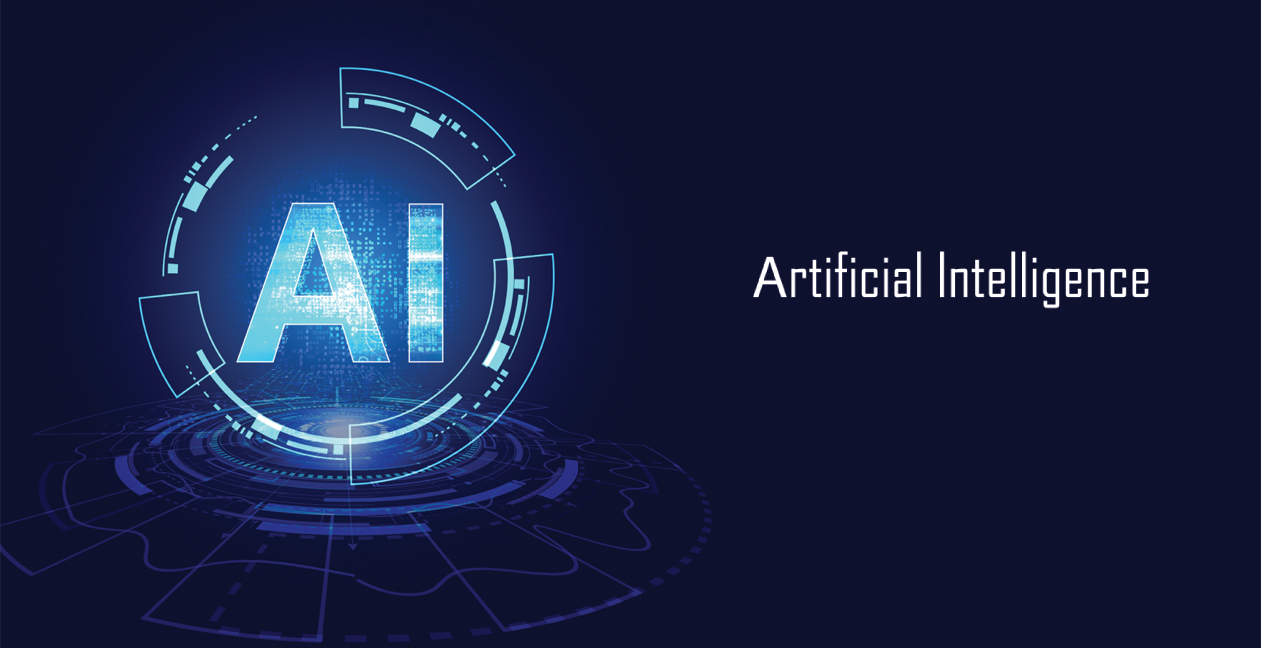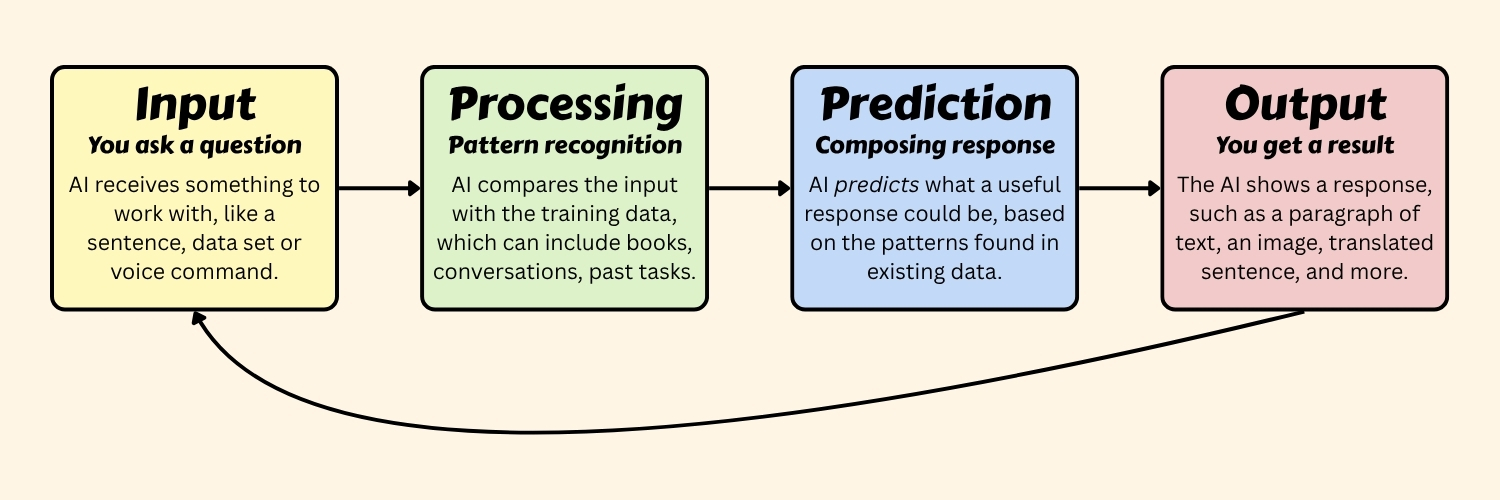What is AI and how it works

What is AI?
According to the Oxford Dictionary AI is:
“The capacity of computers or other machines to exhibit or simulate intelligent behaviour”
Oxford English Dictionary (OED)
This includes solving problems, recognising or generating speech and images, translating languages, or holding a natural sounding conversation.
The branch of AI, you will be most familiar with, is called Generative AI, with tools such as Copilot or ChatGPT producing human-like content in the form of text, images, music, or code. However, simpler, single task focused AI models can be found everywhere, from Face ID unlocking your phone to recommending next movies based on your watch pattern.
Even though AI generated output may sound convincing, AI does not think or understand the way humans do and can create incorrect or harmful content. Learn how to use AI in the “Responsible use of AI” section, as well as how to properly reference AI use in your academic resources in the “College AI guidelines” section.
How AI works?
Although Artificial Intelligence might seem magical, it is all about analysing data, spotting patterns, and clever algorithms.
Generally, AI systems follow the process illustrated below:

- Input – you provide a prompt or data. You might type a question, upload a document or image, ask for ideas, or even speak to the AI tool, and it will take your input and prepare to analyse it.
- Processing – the AI reads or listens to your input, breaks it down into meaning, structure, and keywords. It compares the input with its extensive database and matches patterns to prepare a response.
- Prediction – the AI does its main job and predicts the next best word, sentence, or action in the response. AI tries to choose most relevant facts or phrases, avoid repetition, and follow your instructions (e.g. specific tone or formatting).
- Output – the AI presents its answer in the appropriate format. At this point you can accept the result, ask follow-up questions, refine your instructions, or start over with a new prompt. Most Generative AI tools, such as ChatGPT or Copilot, keep the context of the conversation, so you can create something over several steps.
To maximise the quality of the AI output, keep your prompts clear and concise, as well as provide context. Then, refine the output by prompting the AI further, e.g. changing tone, expanding on the topic or making it more concise, asking for suggestions, and more.
Learn more about AI and how to use it on this short course for Further Education or Higher Education.
Recommended Tools
The College encourages the use of AI tools when it is allowed. However, remember to check the usage policies of each tool, as most of them have age restrictions and require parental (or guardian’s) consent before you can use them for college work.

We recommend you use the following Generative AI tools:
- Microsoft Copilot – you have institutional consent to use Copilot even if your are under 18, however, you must be signed in into your college account.
- ChatGPT – you need parental (or guardian’s) consent to use ChatGPT if you are 13-17 years old.
- Claude – you need to be over 18 to legally use Claude.
Learn how to use AI in the “Responsible use of AI” section, as well as how to properly reference AI use in your academic resources in the “College AI guidelines” section.
Frequently Asked Questions (FAQs)
I want to learn more about Generative AI.
If you are interested in how generative AI works in more detail, Google have produced an excellent explanation video:
You can also find out more information here on Google’s Blog feature: Ask a Techspert.
Or finally, you could ask AI to explain it itself by signing in to Copilot using your college account.
Can I use AI to help with my assignments?
Using AI as a starting point is a good practice. Asking the AI about the subject of your assignment to receive additional insight and help on where to start can be extremely useful as starting assignments is often the hardest part.
You just need to make sure you do not copy and paste the information the AI gives you into your assignment. If you want to use some of the AI output in your works, make sure it is allowed by the teacher and referenced properly.
Will I get in trouble or a disciplinary for using AI?
If you follow the guidance provided using AI correctly within the college’s guidance and plagiarism policy, you will not need to worry about getting into trouble.
However, if you choose to ignore this and use AI in your work by copying and pasting full assignments or parts of them, you may face disciplinary action.